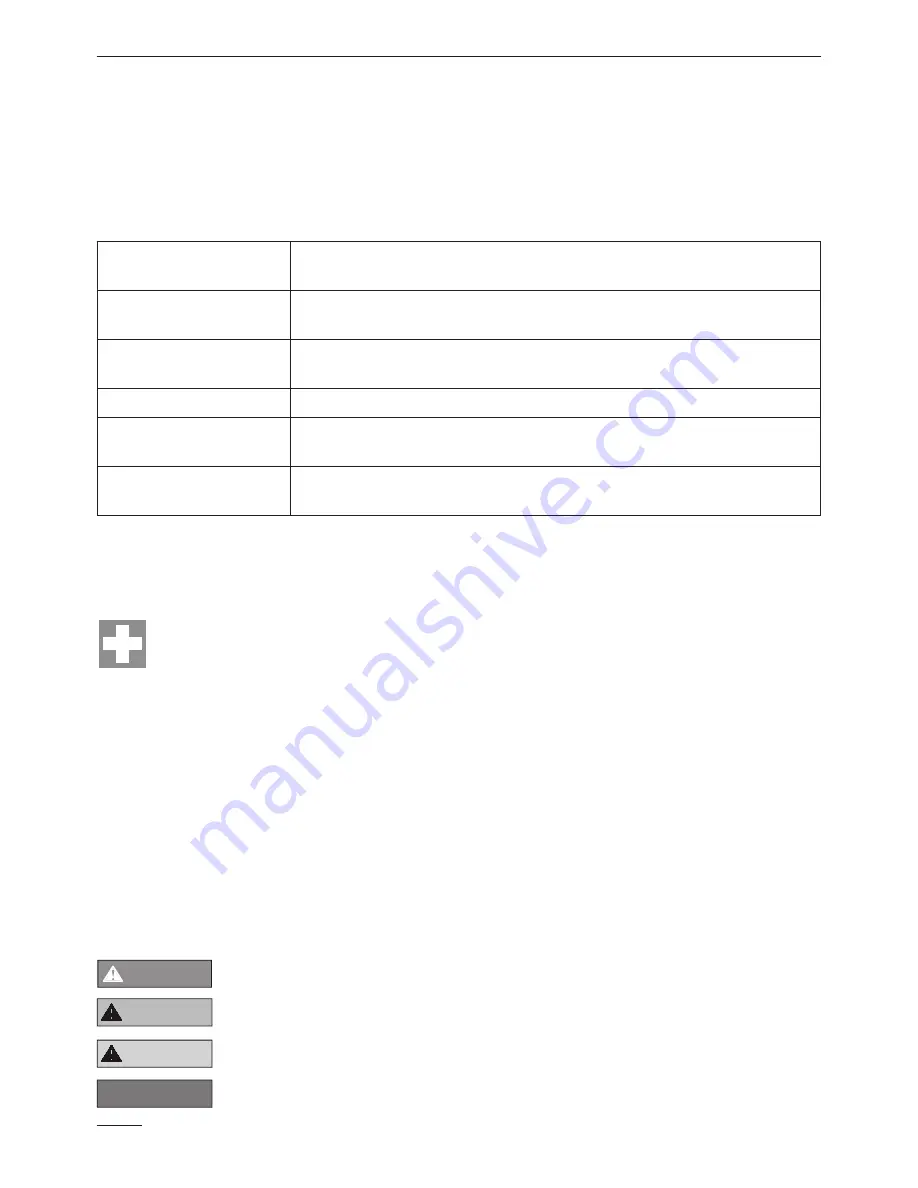
14
User manual
1.2 Effect of carbon monoxide on the organism
High inhaled carbon monoxide concentrations bind carbon monoxide to the red blood
cells and block the uptake of oxygen in the blood. This lack of oxygen can quickly lead to
health problems such as permanent organ damage and suffocation. Even small amounts
of inhaled carbon monoxide lead to irreversible heart and brain damage, larger amounts to
death. The following table describes the effect of carbon monoxide on the human body as
a function of the concentration of respiratory poison in the air. (ppm = parts per million, ‰)
Carbon monoxide
value
Possible symptoms of intoxication
200 ppm
Carbon monoxide value Possible symptoms of intoxication
Low headache, fatigue, dizziness, nausea after 2 to 3 hours.
400 ppm
Headache in the forehead within 1 to 2 hours, life threatening
after 3 hours.
800 ppm
Dizziness, nausea and cramping within 45 minutes.
1.600 ppm
Headache, dizziness and nausea within 20 minutes.
Unconsciousness within 2 hours Death possible within 1 hour.
3.200 ppm
Headache, dizziness and nausea within 5 to 10 minutes.
Death within 25 to 30 minutes.
Other hallmarks of carbon monoxide poisoning can be cramping and rosy
complexion despite lack of oxygen.
1.3 Emergency measures in case of gas leakage
• Always observe your own safety.
• Hold your breath.
A cloth held in front of the mouth and nose does not protect and does not filter toxic
gases.
• Extinguish open flames including smokers.
• Breathe fresh air, eg. at the window.
• Provide fresh air by opening windows and doors.
Thus, the concentration of carbon monoxide in the air is rapidly reduced.
• Turn off all gas sources.
• Rescue victims with symptoms of intoxication in the fresh air.
• Do not turn on or off electrical appliances, including telephones, doorbells and
the Gas & CO Detector.
• Close the main gas stopcock.
With LPG this is usually directly at the gas tank.
• Depending on the situation, call the gas supplier or the fire brigade:
112
1.4 Warning steps
DANGER
Warnings against hazards that will result
directly in death
or
serious
injuries
in case of non-observance.
WARNING
Warnings against hazards that may result in
death
or
serious injuries
in case of nonobservance.
CAUTION
Warnings against hazards that may result in
injuries
in case of non-
observance.
NOTICE
Warnings against hazards that may result in
material damage
in case of
non-observance.















































